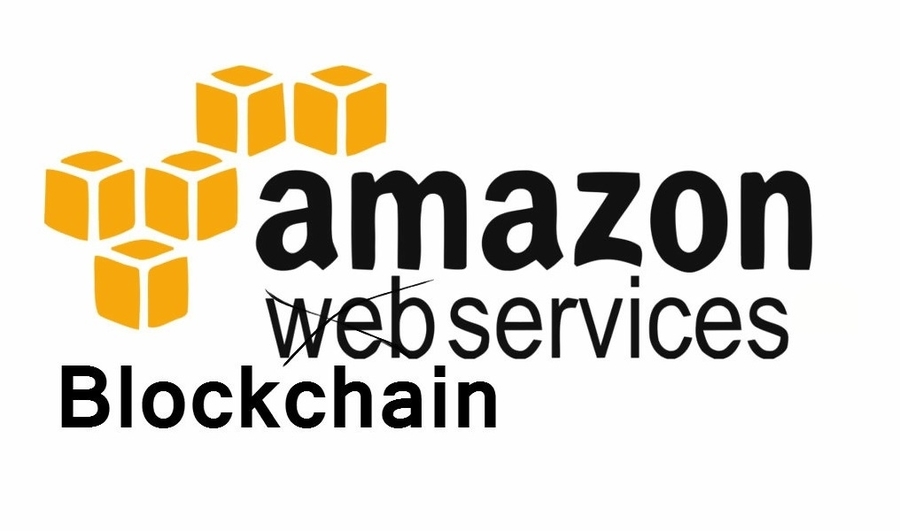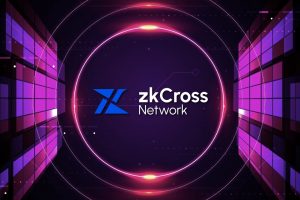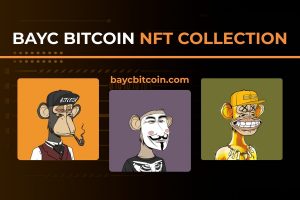Amazon Managed Blockchain is out, and it’s not crypto related – A basic guide for the uninitiated

The Blockchain world keeps expanding. Several big private companies have announced plans of creating their own blockchain or cryptocurrencies. Other companies are banding to support specific cryptocurrency efforts. And on the independent side of the spectrum, over a dozen great projects have launched over the last year.
In other words, blockchain is growing. New use cases are being discovered for the technology, and every day, it inches just a bit closer to the center stage. Or, if you follow Amazon, it gets a lot closer.
This past April, Amazon Web Services added yet another feature to its already diverse list of offerings. In this case, it’s one of the first blockchain-related features coming from private companies: Amazon Managed Blockchain.
What is it? Is Amazon launching its cryptocurrency?
It’s not a blockchain. While we wouldn’t assure anyone that Amazon won’t eventually release its own Blockchain, that’s not the case yet. Perhaps in the future, it will be, although there are reasons to doubt it. For now, it is the evidence of the blockchain creating impact around the globe.
Either way, Amazon Managed Blockchain (AMB for short) instead of a proprietary blockchain, is a service. This service allows Amazon Web Services customers to create and manage their own scalable blockchain networks. In other words, it allows Amazon to host blockchain networks for millions of their web clients.
As for the inevitable, the following question might be (which blockchain?) AMB allows its customers to choose their frameworks. Currently, only Hyperledger Fabric is available. However, the plan is to add Ethereum to the list in the near future. We’ll likely see other blockchains after these two are fully running, although those two are already the most popular frameworks in the market.
So I can create my own cryptocurrency now?
Uh… no. You can’t. Well, you can, since blockchain is open source and all that. But you can’t do it with this particular Amazon service.
What AMB is offering in this service isn’t at all related to cryptocurrencies, or at least not by design. Instead, AMB is more of a developer support feature using blockchain’s immutable ledger. In other words, this isn’t so much for blockchain projects as it is for general development.
Wait, wait, wait. But blockchain means cryptocurrency.
Sure, in the same way “internal combustion engine” means “car.”
Which means, not at all.
Blockchain technology came to be known by the masses because of Cryptocurrencies like Bitcoin. However, cryptocurrencies are but one possible use of the technology.
A blockchain is simply a distributed immutable ledger i.e a ledger that keeps track of every transaction or changes made, keeping copies in every participant node. This prevents data corruption and ensures the integrity of the ledger itself.
Uh… right. How does AMB work with developers then? Do they get paid with crypto for using it?
For the last time, this has nothing to do with crypto. And developers aren’t paid with crypto.
Well, they might be being paid with crypto, who knows. It depends on their contracts and whether they asked for it and – this is entirely irrelevant.
The goal with AMB isn’t at all cryptocurrency related, that’s the point. AMB is not here to help you with your bitcoin, Ethereum, Binance coin, or whatever. As mentioned before, blockchain has other uses, and AMB is one of the blockchain applications with service provision as a focus.
And in this case, you could think of AMB as a replacement to the ever-present GIT.
The ever-present… wait; you just called me a WHAT?
Ugh.
Let’s go back to basics here. Most software projects these days are developed not by one person but by teams of many people. These teams can sometimes grow to have hundreds of people, all working on the same project.
Let’s compare a coding a software project with baking a cake. A huge, complex cake. It’s the size of a house and has an intricate design full of details and little figures, mostly of animals.
Since it’s a huge project, a single person can’t do it. So they hire a hundred cooks for it. And they all rush to the kitchen and start working on it, without asking other cooks what they’re doing. They just work on their own, day and night, and…
And once the deadline arrives, they have fifty huge cakes, but no decoration, or filler, or anything. Just the cakes, hundreds of them. Because they never bothered to ask each other what they were doing nor could they keep track of each other’s progress.
That would be a disaster, wouldn’t it? Well, that’s what GIT is for. GIT is a version control system that allows its users to keep track of several things, including:
- Current code and documentation for a project.
- Which people are working on it, and what they’re doing.
- A history of all changes made to the code, allowing you to roll back any files if necessary.
In other words, GIT, and version control systems, in general, allow for software projects to go big without becoming too disorganized.
Right. I don’t know what this has to do with blockchain, but thanks for the unwanted explanation.
Getting there.
You could see AMB as a replacement for GIT since it leverages on distributed ledger technology. The blockchain services that Amazon is offering simply allow for a group of developers to keep track of all changes or transactions made to a project. Its immutable ledger makes sure no information is ever lost.
Basically, it serves as a distributed GIT. While the GIT system is great for some projects, it might not be good for everything – which is why this exists. Both systems can be used for version control, and which one will work better will depend on your individual goals.
Fine, so this is some programming nonsense. Thanks. Does this matter for the crypto community at all?
It actually does, although not in the way you might be thinking. This is unlikely to drive crypto adoption, although some analysts expect the price of Ethereum will go up thanks to it.
Instead, what AMB is doing is putting blockchain as a technology closer to many people. This is important because it means more people will grow familiar with the blockchain and get to understand it. And just helping people understand it is huge, considering most people don’t.
Conclusion
The key for a technology to become widespread is having people start using it and noticing its strengths. This is but another use of the blockchain technology, one that’s slowly reaching the mainstream. It may not represent huge news for the crypto community, but it’s another step towards blockchain usage becoming commonplace.
Author Bio:

Image Source: the-blockchain.com
Discuss this news on our Telegram Community. Subscribe to us on Google news and do follow us on Twitter @Blockmanity
Did you like the news you just read? Please leave a feedback to help us serve you better
Disclaimer: Blockmanity is a news portal and does not provide any financial advice. Blockmanity's role is to inform the cryptocurrency and blockchain community about what's going on in this space. Please do your own due diligence before making any investment. Blockmanity won't be responsible for any loss of funds.














